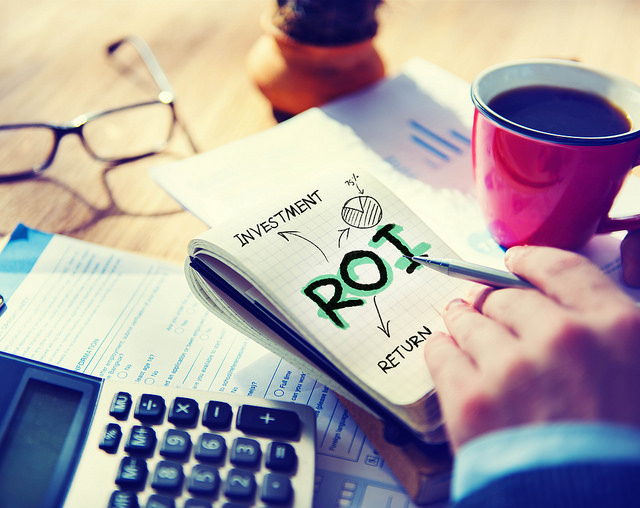You need money to travel. (Duh!) More importantly, well-organized finances will not only make more sense, but will also give your money the best chance to work for you…so you can keep travelling. This is all about asset allocation, for travellers.
Dear Nora,
I’ve been saving money for my year-long trip in my bank account, but I’m a bit nervous about having so much money in there. Perhaps I could invest and make some money with it? But I don’t want to lose it all either. What do I do? – Lynette
This is a common mis-conception about investments; that they are either 100% safe or 100% risky. Far from it! In this article, I’ll introduce you to the basics of asset allocation, with some suggestions for how you can structure your own finances to help you in your travels, and in life.
Asset Allocation Basics
Asset allocation is about how you allocate your money for both organizational purposes, as well as according to various investment goals and time frames.
While you might assume that the specific choice of investments makes all the difference, in fact, it’s all about asset allocation. When I was a financial planner, the “saying” in the industry was that 90% of a portfolio’s return had to do with asset allocation, not picking investments or timing the market. Although this theory has recently been challenged, it remains undisputed that 33-75% of the variance in your returns can be attributed to your asset allocation strategy.
And your asset allocation strategy is not something that changes with the markets; in fact, the right asset allocation strategy actually helps you weather all market conditions, allowing you to be more “hands off” with your money and to enjoy the finer things in life (like travel).
So, get the asset allocation right, and you’re golden. Here’s how.
Asset Classes
There are four basic asset classes, each with different underlying investments and performance characteristics.
Cash
Despite its moniker, the cash class is about more than stashing money under your pillow. Cash investments include bank accounts, high-interest savings, and money market accounts. It won’t earn you a ton of money; in fact, over the long term, you generally can’t even keep up with inflation, especially after you’ve paid tax on your earnings (which you generally have to do).
Fixed Income
Cash is actually a part of the fixed income asset class, however I’m separating it out here for travel purposes, the reasons for which will become clear later. Fixed income investments earn interest, and are sometimes (but not always) guaranteed. Sometimes this requires locking your money in for a certain period of time during which you can’t access it. Although you’ll usually earn more with fixed income investments than cash, don’t make an offer on that mansion quite yet. Fixed income investments include bonds, GICs, term deposits, and some real estate derivatives.
Equities
Equities are stock market investments. Now, don’t freak out! You don’t need to become a day-trading guru, nor roll the dice at risk of losing all your money. Not all equities are that risky. In fact, there are a few sub-classes within the equity asset class.
Large Capitalization (also known as Blue Chip) equities are large, stable companies with long histories and fairly stable performance track records.
Medium Capitalization includes smaller or newer companies, but ones that are still widely recognized.
Small Capitalization investments are generally start-ups, or companies that are considered to be higher risk due to the industry, history, or size.
Within each of these sub-classes, you can then choose between Domestic and International equities. Generally speaking, domestic equities are a bit “safer” in that you’re not exposed to the additional risk of currency fluctuations.
Sector
While still equities, sector investments are highly-specialized, and generally coincide with small and medium capitalizations. With this precise degree of specialization comes the highest amount of risk. Sector examples include natural resources, or science and technology.
“Risk”, Returns, and Time Frame
You’ll hear investment gurus use terms like “fluctuations” and “volatility” in reference to various investments; although you might equate this with the term “risk”, there’s more to it. Risk implies that an investment may or may not perform at all (eg: “high risk” would indicate that you could make a ton of money, or lose everything and never get it back), which isn’t quite accurate.
The X-factor here is time frame. Given enough time, most investments perform. If you look at the history of the stock market, even including all the corrections and crashes we’ve seen in the last 100 years, equities have far out-performed every other asset class. The “riskier” an investment is, the more volatile it can be in the short term, but the higher the potential growth you’ll see in the long term.
This uncovers one of the underlying principles of asset allocation: investment goals and time frame are the cornerstones of any asset allocation strategy.
Asset Allocation For Travellers
With these basics covered, let’s look at how asset allocation is important to your travel savings and how this fits into your overall financial strategy. Although I’m focusing mostly on travel goals here, you can apply the following steps to any and all of your life/investment goals.
To bring this concept to life, I’ll demonstrate using my own asset allocation strategy, which you can customize to your own needs.
Step 1: Determine Your Goals
With regards to funding my travel lifestyle, I have a few goals and investment piles.
Operating Expenses/Slush/Emergency Fund: Some months are more expensive than others, and I like to have a stash of money that’s always there when I need it, to pay for expenses. I also like to have enough in the event of an emergency. My rule of thumb is to have enough money in an emergency fund to return home in a pinch from anywhere in the world.
Note: If you’re saving up for a trip with a fixed time frame and won’t be earning an income along the way as I do, then you’ll want your operating expenses to be enough to cover the entire duration of your trip.
Home/Business Setup: When I sold everything I owned to travel full-time, I didn’t put that money in my operating expense/slush fund. Instead, I kept it separate, on the premise that somewhere down the line I might want to use that money to set up a new home, or perhaps invest in a new business venture.
Retirement: Although not related to travel, I consider it important to have retirement savings, to provide for my financial future when I might not be willing (or able) to work any more.
Other common investment goals include saving up for a major purchase like buying property, or paying for a child’s higher education. When creating these investment goals, you probably won’t have the money already saved for all of them. Hence, along with the investment goal, decide on an amount of money you want to have and when you’ll need it.
Step 2: Set Your Time Frame
Generally speaking, asset allocation time frames fit into a few categories:
0-3 years = short-term/immediate
3-5 years = medium-term
6+ years = long-term
Operating Expense/Slush/Emergency Fund: My time frame for this money is immediate. I could need any or all of it at any time.
Home/Business Setup: When I sold everything to travel, I figured it would be at least a few years before I would need this money. So at the time, I set a medium-term time frame of 3-5 years. (Turns out it has been over 10 years, but I didn’t know that at the time, and wasn’t prepared to bank on it).
Retirement: I’ve got a few decades in me yet before I’ll need to retire, with a long-term time frame of over 20 years.
You’ll also find that as time goes on, your asset allocation strategy will change as your investment goals get closer, and/or your goals shift and evolve. For example, as you approach retirement, you’ll want to change your investment strategy for your retirement portfolio based on a different time frame.
Step 3: Determine Your Risk Tolerance
Although technically a long-term investment time frame (like retirement) means you can invest in a high-risk (and thus, high return over the long haul) portfolio, it may not bode well for your stomach. If you’re waking in the middle of the night in a cold sweat worried about your investments, or if you’re checking your portfolio performance all the time and feeling over-anxious when the market is wonky, you might have a lower tolerance for risk.
That’s okay! It’s important that you be able to sleep well with your choices. But be aware that the “safer” your investment is, the less growth it will ultimately see, and the more money you’ll need to save yourself to make up the difference. This becomes especially apparent with retirement savings. Check out this primer on compound growth to better understand this concept.
For example, here are the effects of different rates of return over the long-term, with a single investment of $10,000:
$10,000 x 25 years x 2%/year = $16,406
$10,000 x 25 years x 5%/year = $33,864
$10,000 x 25 years x 8%/year = $68,485
Note: in a previous article I wrote some people balked at my use of 8%/year in an example. For a long-term equity portfolio, 8%/year on average is a very realistic rate of return. The key word here is average. When the markets are going gangbusters, people tell me I’m crazy to estimate 8%/year on average and say I should be using 12%. When the markets are diving, people tell me I’m crazy to use 8%/year, and say I should be using 5%. History shows that 8%/year is a realistic average annual rate of return over the long-term for a well-balanced moderate aggressive equity portfolio.
Read on to put this all together.
Step 4: Create an Asset Allocation Strategy for Each Investment Goal
Here are six different types of asset allocation strategies and general portfolio compositions you could employ for each type of investment goal you have.
Cash
You need the money immediately or at any time, and can’t afford to lose a penny. Investment Mix: 100% cash (eg: high-interest savings or money market).
Conservative
This is for a short-term time frame and/or super low tolerance for risk. Generally for portfolios that you expect to withdraw from very soon. Investment Mix: Up to 15% Equities (Domestic, Large Cap), 85% Fixed Income
Moderate Conservative
This is best for a short to medium time frame, with the ability or tolerance for some fluctuation in order to get slightly higher overall returns. Investment Mix: Up to 25% Equities (made up of 15%+ Domestic, Large Cap), 75% Fixed Income
Moderate
Straight down the middle with a medium time frame, and/or moderate tolerance for risk. Investment Mix: 50% Equities (25%+ Domestic, Large Cap), 50% Fixed Income
Moderate Aggressive
Great for long time frames and fairly strong risk tolerance with an ability to ignore market fluctuations and keep your eye on the bigger picture. A great portfolio for retirement. Investment Mix: 80% Equities (40%+ Domestic Large Cap, up to 10% Sector), 20% Fixed Income
Aggressive
Not for the faint of heart! Aggressive portfolio mixes are for the sort of person who has the stomach to buy more when the markets crash. If you’re investing in an aggressive portfolio, you’ll want a long time frame to ride out the bumps, and a strong tolerance for volatility. Investment Mix: 100% Equities (50%+ Domestic Large Cap, up to 15% Sector)
Here’s how I put together each investment goal with its associated time frame and my personal tolerance for risk (aka short-term fluctuation or volatility):
Operating Expense/Slush/Emergency Fund: Because I might need this money any time, I keep it in cash investments.
Home/Business Setup: With a 3-5 year time frame, I initially chose a Moderate Conservative portfolio. A few years into my travels, I realized I wouldn’t need the money for a while, so along with my decent tolerance for risk, I shifted it to a Moderate portfolio.
Retirement: With a long time frame and very strong tolerance for short-term fluctuation, I’m in an Aggressive portfolio. But I’m also a believer in everything in moderation, so I still have about 15% fixed income investments in there.
Advanced Asset Allocation
I haven’t even touched on issues like the tax treatment of investments, and how certain types of income (unfortunately for risk-averse people, the interest income that comes from more conservative investments) can result in bigger tax consequences. Going down this rabbit hole requires a more comprehensive look at your overall financial profile, including age, income, assets and liabilities, and marginal tax rates.
This article delves into some more advanced concepts like how to measure risk when choosing investments by looking at Beta and R-squared factors, the value of time invested (and staying the course), the importance of asset allocation, and even some tax strategies.
Although you’ve just read a comprehensive primer for asset allocation and portfolio planning, I highly recommend seeing a financial planner who can help put more of a science to things like determining your risk tolerance, assessing your situation with professional perspective, and helping you to choose investment portfolios that will work for your needs. The best way to find a financial planner is to ask friends and family for a referral; failing that, walk into your friendly neighbourhood bank, where there are often people on staff to help get you started.
Worried More About Debts than Investments? Check These Posts Out:
Top 5 Secured Credit Cards For Boosting Your Credit Score
4 Types of Credit Cards for Bad Credit
Bad Credit? 5 Simple Steps To Rebuild Your Credit In 12 Months!
asset allocation, Dear Nora, investment planning










